- 80 -
http://www.pathology-world.com/
"101 Facts About the Human Body" by Radhika Venkata
Page 81 of 107
Health and Related Topics
Is sun light enough for your daily dose of Vitamin
D?
Many doctors advise their patients to get at least five to ten minutes of
sunlight if they are light skinned, and thirty to sixty minutes if they are dark
skinned people, every day.
Sunlight stimulates the Vitamin D synthesis in the skin and most people may
get enough vitamin D from this source with that amount of exposure.
But, people are afraid of getting skin cancers through exposure to the ultra-
violet rays from the sun.
Vitamin D is very essential for strong bone development. New research says
that Vitamin D helps to prevent cancer. It is sometimes called the 'sunshine
vitamin'.
People from cold areas like Alaska and northern Canada, who see less
sunshine, probably won't get enough vitamin D because of less exposure to
the sun.
Exposure to the sun without sun screen for 30 minutes can synthesize
approximately 10,000 to 20,000 IU of vitamin D in the skin. This is more
than adequate when compared to the daily requirement.
But, you should always use an appropriate sunscreen preparation when you
are in the sun.
Each person needs 400 to 600 IU (International Unit) of vitamin D through
their diet per day and 800 or more IU/day if sun exposure is inadequate.
Some people that cannot get their Vitamin D requirement from the sun, use
vitamin D supplements like cod liver oil or vitamin tablets.
You should consult your doctor or pharmacist for advice about what might be
the most appropriate ways for you to ensure that you get the Vitamin D
which your body requires.
Should you take water soluble vitamins every day?
Your body needs vitamins every day for body metabolism, cell growth and
cell repair. You just need them in minute quantities, but they have an
©
Copyright 2009 All rights reserved
- 81 -
http://www.pathology-world.com/
"101 Facts About the Human Body" by Radhika Venkata
Page 82 of 107
essential role in your body's health.
Vitamin A is needed for good vision
Vitamin B helps respiration, building red blood cells and normal activity
of your nervous system
Vitamin C can assist the healing of damaged tissues
Vitamin D is believed important for maintaining the strength of your
bones.
Vitamins are divided into two groups:
Fat soluble vitamins: These include the vitamins A, D, E and K. They are
soluble in fats, so they need a complex mechanism for absorption in the
small intestine. Once they are absorbed into the body, they can be stored in
the body organs like your liver. A healthy human body can use fat-soluble
vitamins it has stored for a few days if fresh supplies are limited, so a daily
supply is not essential.
Water soluble vitamins: These include the Vitamin B-Complex; includes
Thiamine(B1), Riboflavin(B2), Niacin(B3), Pantothenic acid(B5),
Pyridoxine(B6), Biotin(B7), Folic acid(B9) and Cobalamin(B12), and Vitamin
C.
These are soluble in water, so they are easily absorbed in the small intestine.
They cannot be stored in the body; you need to get a supply of these
vitamins every day.
So kids, ask your mother to give you green vegetables, liver, meat and citrus
fruits for a good supply of the B-complex group of vitamins and vitamin C.
You can get fat-soluble vitamins from carrots, eggs, dairy products, liver and
green vegetables.
Consuming too much of some vitamins, maybe in the form of supplements,
can be risky so always check with your doctor before adding supplements to
your diet to ensure that you really need them.
Why is cigarette smoking bad?
Cigarettes contain substances, including nicotine, tar and carbon monoxide
©
Copyright 2009 All rights reserved
- 82 -
http://www.pathology-world.com/
"101 Facts About the Human Body" by Radhika Venkata
Page 83 of 107
that will damage our health.
Nicotine is an addictive compound which causes damage to the cilia in the
respiratory tract. These cilia and the mucus in that area are vital for trapping
dust particles and germs so they don’t get to our lungs.
People that have damaged cilia get frequent lung infections.
Nicotine raises our blood pressure and also increases our risk of getting
osteoporosis which causes our bones to become brittle and fracture very
easily.
Tar damages the lung tissue and is a cause of lung cancer.
Carbon monoxide binds with the haemoglobin in our blood and reduces the
amount of oxygen which it can carry. So, smokers can become short of
breath from only a small level of activity and find more strenuous exercise
much more demanding.
Is sneezing a good thing?
Yes, it is. When the mucosa in your nose gets irritated by strong smell, pollen
or dust etc., you sneeze to get rid of whatever irritating things landed on the
nasal mucosa.
This is a simple protective mechanism to get rid of foreign bodies from there.
How we sneeze: When our nasal mucosa gets irritated, it sends signals to
the brain stem through the sensory nerves of your Trigeminal nerve.
The brain stem tells the muscles of the face, chest and diaphragm to
contract.
First, you inhale deeply, and then push the air out with force through your
nose. This pushes the irritating substance from the nasal mucosa.
You might expel air at a speed up to 160 miles per hour from your nose
when you sneeze. Your body may vibrate and your eyes close while you are
sneezing to reduce any bad effects of that rush of air.
But remember to always cover your nose when you sneeze! People who have
a cold, fever or a viral infection push germs into other people’s faces when
they sneeze.
©
Copyright 2009 All rights reserved
- 83 -
http://www.pathology-world.com/
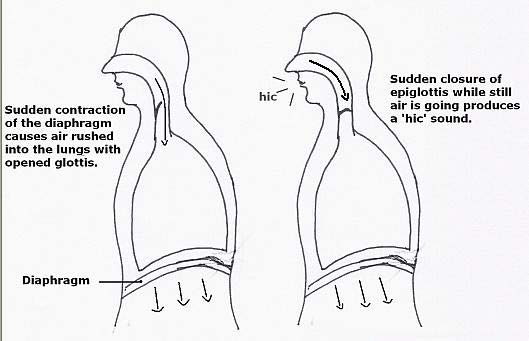
"101 Facts About the Human Body" by Radhika Venkata
Page 84 of 107
Covering your nose is safer, and it’s also good manners!
Are Hiccups dangerous?
There is a big, flat muscle called the 'diaphragm' below the lungs and heart
which separates the chest from the abdomen.
The diaphragm is very important in our breathing. It contracts to increase
the space in the thorax (chest) and reduces the pressure in the thorax so
that air is sucked into the lungs. This is called 'inspiration'.
When the diaphragm relaxes, it pushes itself upwards so the space in the
thoracic cavity decreases and the air in the lungs is pushed out. This is called
'expiration'.
If the diaphragm is irritated by a full stomach or for any other reason, it
contracts suddenly and air rushes into the lungs. While this ‘inspiration’ is
happening, the epiglottis (an elastic flap of cartilage that acts as a lid over
our windpipe when we are swallowing) closes suddenly.
The expelled air strikes the epiglottis surface and produces the 'Hic' sound in
our hiccups.
©
Copyright 2009 All rights reserved
- 84 -
http://www.pathology-world.com/
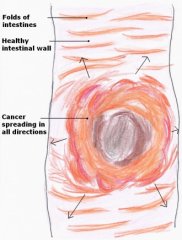
"101 Facts About the Human Body" by Radhika Venkata
Page 85 of 107
These hiccups usually go away in a few minutes. If they are still there for,
say, more than 48 hours, get further advice from your doctor.
Why do you get Vaccinations (shots) from your
doctor?
Vaccinations are injections against common diseases that people can get.
Different vaccinations will protect us against particular diseases.
When we get an infection, our body fights against it and gets rid of it by
producing a protein substance in our blood (called an 'antibody') that fights
against the germ protein (an antigen).
If we are infected by the same type of germ later on, our body remembers it
from the earlier infection and stops further spread. (See the question; ‘How
germs are killed in our body? ')
But, this does not happen with some infections which are more dangerous.
So, scientists produce antibodies in laboratories against these germs that can
be safely injected into us before we have that first attack.
Cool, huh?
You should be thankful to Dr. Edward Jenner, the British physician who
discovered a vaccine against 'smallpox', which was once a deadly disease.
Why is Cancer compared to a
Crab?
What is cancer? Cancer is when a normal cell
changes to an abnormal cell and grows in the
body to be a mass of cells.
Why is cancer is compared to a crab? Because
of the way that a crab moves.
When you go to the beach, look for a crab
under the rocks. You will see that it moves
sideways because of the way that its leg joints
are arranged and its tough exoskeleton.
When a crab moves fast, it looks like it is
©
Copyright 2009 All rights reserved
- 85 -
http://www.pathology-world.com/
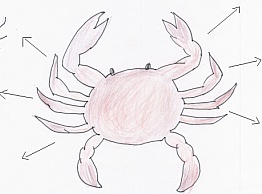
"101 Facts About the Human Body" by Radhika Venkata
Page 86 of 107
moving in all directions at once!
That is like the way that cancer
moves (spreads) through someone’s
body; in all directions.
Also, 'carcinos' means crab in Greek
and carcinos is a type of cancer.
©
Copyright 2009 All rights reserved
- 86 -
http://www.pathology-world.com/
"101 Facts About the Human Body" by Radhika Venkata
Page 87 of 107
Men, Women and Related Topics
Why are men affected by baldness more than women?
Usually, men will show signs of baldness after the age of 30. Their hair line
slowly recedes as they lose some hair. There are both genetic and hormonal
reasons which play a role in male pattern baldness.
Men have hormones called 'androgens', including 'dihydrotestosterone'.
Dihydrotestosterone is responsible for male-type baldness.
There will be thinning of a woman’s hair as she ages but it will not be like
typical male pattern baldness.
Do men have a uterus (the sac that holds a
developing baby)?
Yes, all males have a rudimentary uterus called the 'prostatic utricle' near the
prostate, but it is really just a small sac that is not any use.
When the fetus develops normally in the mother's belly, its organs develop
slowly as the fetus approaches full term.
In a female baby, the uterus and the fallopian tubes develop from a tube-like
structure called the 'paramesonephric duct'.
With male babies, most of this duct disappears because of the hormonal
influence. But, both ends of the paramesonephric duct remain as small,
useless sac-like structures.
©
Copyright 2009 All rights reserved
- 87 -
http://www.pathology-world.com/
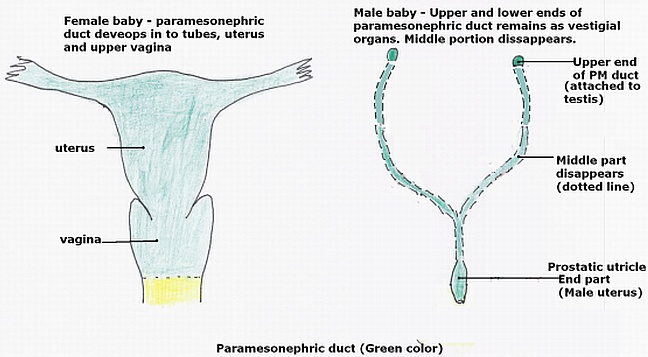
"101 Facts About the Human Body" by Radhika Venkata
Page 88 of 107
Paramesonephric duct - Part of it is like the uterus in a woman.
The end part of the duct will become a non-working, small sac-like structure
attached to the prostate and called the 'prostatic utricle'. It is only
rudimentary and equivalent to the uterus in a female.
The beginning part of the paramesonephric duct becomes another small sac-
like structure attached to the testes.
What determines the sex of a person?
A baby is conceived after the fertilization of an ovum from the mother by a
sperm from the father. When the sperm fertilizes the ovum, a zygote
(fertilized cell with two sets of chromosomes) is formed. This zygote gets
chromosomes from both the ovum and the sperm.
All ova only have X chromosomes, but sperm can have either X or Y
chromosomes. A baby always gets one X from the mother. The baby's sex
depends on whether the sperm which fertilizes the ovum has X chromosomes
(so it will become a female) or Y chromosomes (so it will become a male).
©
Copyright 2009 All rights reserved
- 88 -
http://www.pathology-world.com/

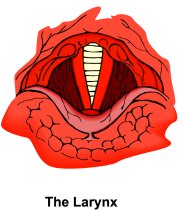
"101 Facts About the Human Body" by Radhika Venkata
Page 89 of 107
Why are children’s and women’s voices
softer than males?
Our voice is produced by the 'larynx' which
is part of the trachea (wind pipe). It has
two thin membranes called 'Vocal cords'.
These vocal cords are protected by the
cartilages that form the 'Adam's apple' in
the neck.
When the air from the lungs is pushed
against the closed vocal cords, they
vibrate in a rhythmic manner to produce
the sound. This sound is converted to
actual words and speech by our pharynx,
larynx and the oral cavity (space behind our lips).
The vocal cords are controlled by the laryngeal muscles which open, close
and alter the length of the vocal cords which affects the loudness and pitch of
the sound produced.
Children and women have thinner and shorter vocal cords which vibrate more
when compared to the thick and long vocal cords of men. The more
vibrations; the sweeter the voice. After puberty, a boy's voice changes as his
©
Copyright 2009 All rights reserved
- 89 -
http://www.pathology-world.com/

"101 Facts About the Human Body" by Radhika Venkata
Page 90 of 107
vocal cords become thicker and longer.
Can some diseases affect only boys and men?
Yes, there are some diseases that can only be seen in the male population.
When a baby is born, it gets genes from both parents. The sex of the baby is
determined by the 'Y chromosome' from the father.
In the picture, the mother has two sex chromosomes (X and X). The father
has two sex chromosomes (X and Y).
The mother produces ovum that carry only X chromosomes.
The father produces sperm that may carry either X chromosomes or Y
chromosomes.
If an ovum (all X chromosomes) combines with an 'X' sperm, the baby will be
a girl.
If an ovum combines with a 'Y' sperm, the baby will be a boy.
So far, so good!
But there can be problem if the X chromosome that the boy gets has a
disease carrying gene. There is no other X gene in boys (like girls), so they
will be affected by that particular disease.
©
Copyright 2009 All rights reserved
- 90 -
http://www.pathology-world.com/
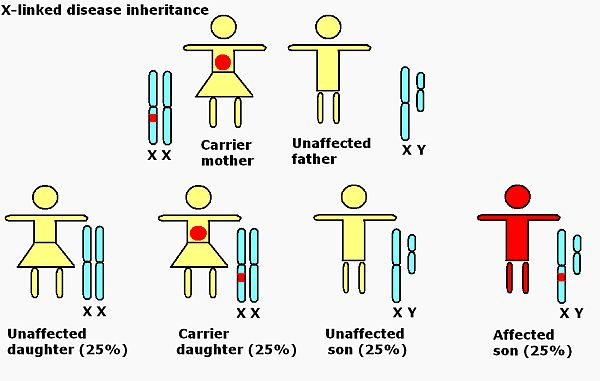
"101 Facts About the Human Body" by Radhika Venkata
Page 91 of 107
In our example, let’s say that the mother is a carrier of the gene for the
disease hemophilia (Hemophilia is a bleeding disorder where the affected
person bleeds longer time after an injury when compared to a normal
person) on one of her X chromosomes. If she conceives a boy, there is an
approximately fifty percent chance of him getting that carrier gene and the
disease.
©
Copyright 2009 All rights reserved
- 91 -
http://www.pathology-world.com/
"101 Facts About the Human Body" by Radhika Venkata
Page 92 of 107
Our Brain and Related Topics
Why does the brain use a larger
area for hands than our whole trunk?
When you read the question, ' Which part of the brain determines your
personality? ', you see that sensations from the whole body are received by
our parietal lobe by the 'sensory cortex' and all of our body movements are
controlled by the frontal lobe through our 'motor cortex'.
The most important feature of the 'motor cortex' is that the muscles which
make fine movements are represented by a larger area in the cortex than the
rest of the body. The whole face is represented by almost half of the motor
area. The whole trunk is represented by a much smaller area because the
muscles of the trunk only perform crude movements, unlike the face.
Our thumb and face muscles are represented by larger area than the muscles
of the trunk or the arm.
This representation is called 'motor homunculus'.
©
Copyright 2009 All rights reserved
- 92 -
http://www.pathology-world.com/
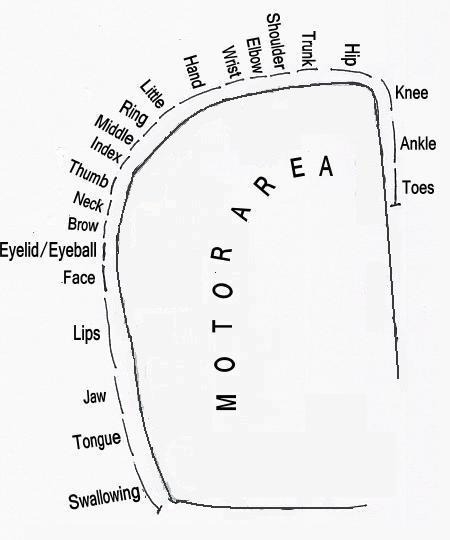
"101 Facts About the Human Body" by Radhika Venkata
Page 93 of 107
Why cannot our brain feel pain?
Though the brain is the main center for the sensation of the pain from
different parts of the body, the brain itself doesn't have any pain receptors.
If somebody pricks you with a pin on your hand, you will feel pain. You feel
pain when you get a belly ache. Pain receptors in all other parts of the body
send signals to the brain so we feel the pain.
But, if a neurosurgeon (brain surgeon) opens up the skull and cuts the brain,
we don't feel any pain because the brain doesn't have any nerve receptors to
‘feel’ the pain.
So, why do we get headaches?
A headache comes from the blood vessels, nerves and meninges (meninges
©
Copyright 2009 All rights reserved
- 93 -
http://www.pathology-world.com/
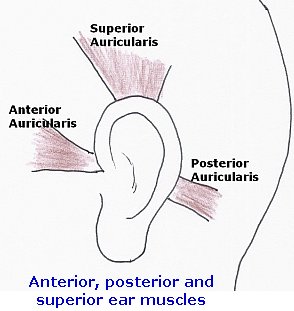
"101 Facts About the Human Body" by Radhika Venkata
Page 94 of 107
are the brain coverings) surrounding the brain, not from the brain itself.
These have many pain receptors.
Why can't we move our ears towards a sound like
animals do?
The outer part of the human ear gets sound waves and directs them into our
ear canal.
Animals can move their ears backwards and even upward to collect sound
waves but we can’t.
This picture shows the
three main external
ear muscles in
humans. You can see
that they are
rudimentary (not well
developed). Some
people have a little
more control of these
muscles and can
wiggle their ears a
little bit to the front
and back
independently without
any scalp or forehead
movements.
Which part of our Brain determines our personality?
People are very different in their emotions, personality and social behavior;
the so-called 'higher intellectual functions' or 'cognitive functions'.
The front part of the brain is called the 'frontal lobe'. Our frontal lobe controls
cognitive functions like:
Memory
Impulse
©
Copyright 2009 All rights reserved
- 94 -
http://www.pathology-world.com/
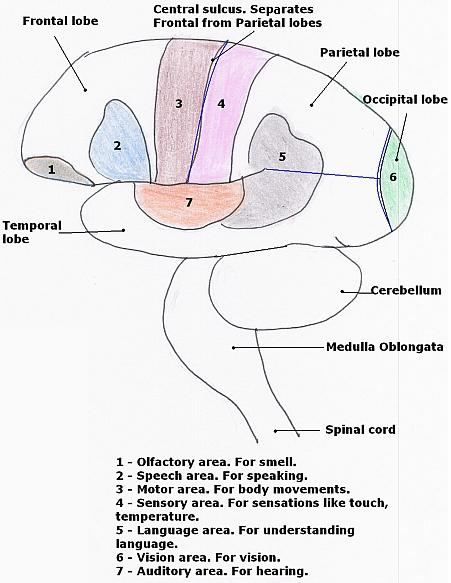
"101 Facts About the Human Body" by Radhika Venkata
Page 95 of 107
Social Behavior
Planning
Judgement
Problem solving
Emotions
Motor movements: All your body movements are controlled by the frontal
lobe through the 'motor cortex/motor area'.
Functional areas of brain: Imaginary Blue lines are drawn to show
frontal, parietal, occipital and temporal lobes separately.
©
Copyright 2009 All rights reserved
- 95 -
http://www.pathology-world.com/
"101 Facts About the Human Body" by Radhika Venkata
Page 96 of 107














